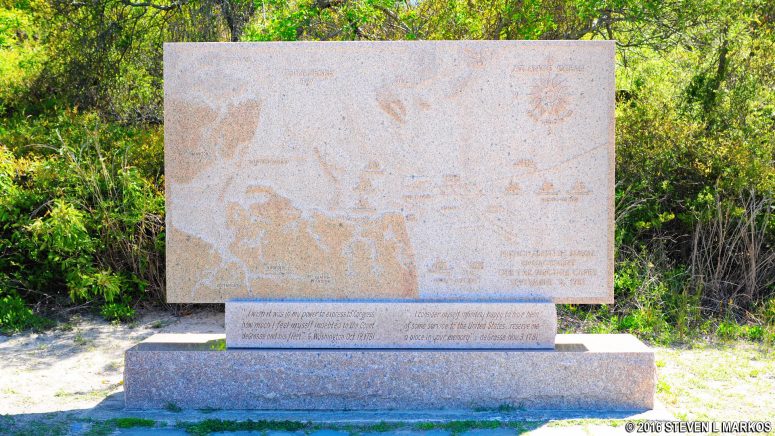The Cape Henry Memorial marks the general location of where the colonists who would eventually establish England’s first successful settlement in North America—Jamestown—first landed on the continent. After sailing from England in December 1606, three ships carrying the investors of the Virginia Company and their hired men arrived off the coast of Cape Henry on April 26, 1607. A small party went ashore to explore, but ended up having a violent encounter with Indians that left two men wounded. On the 29th, another party came ashore and erected a cross of oak, naming the spot Cape Henry in honor of Henry, Prince of Wales. The cross was made back in England for the purpose of being planted on the initial landing spot. The men left the next day in search of a permanent place to settle. They landed on what would become known as Jamestown Island on May 13, 1607.
There are actually three points of interest at the Memorial site. First and foremost is the Cape Henry Memorial, a concrete cross fashioned to resemble the oak cross originally erected on the cape. This was dedicated on April 26, 1935, by the Daughters of the American Colonists.
A second memorial is of more recent origin, having been dedicated in 1981. It commemorates the Battle of the Capes that took place within visual distance of Cape Henry during the American Revolution. On September 5, 1781, nineteen British warships were surprised by an awaiting fleet of twenty-four French ships commanded by Admiral Francois Joseph Paul de Grasse. The two navies battled for four days, each sustaining heavy damage. On the 9th, another fleet of French ships arrived from Rhode Island, forcing the British to flee the area and return to New York. The outcome was instrumental in the American victory over the British at Yorktown because the British ships were loaded with supplies and reinforcements for General Charles Cornwallis. A little over a month later, Cornwallis surrendered to General George Washington and French commander Jean Baptiste de Rochambeau.
In addition to the battle monument is a statue of de Grasse. Provided by the French government for America’s bicentennial, the statue was dedicated in October 1976.
With a few exceptions, use of any photograph on the National Park Planner website requires a paid Royalty Free Editorial Use License or Commercial Use License. See the Photo Usage page for details.
Last updated on April 3, 2020







